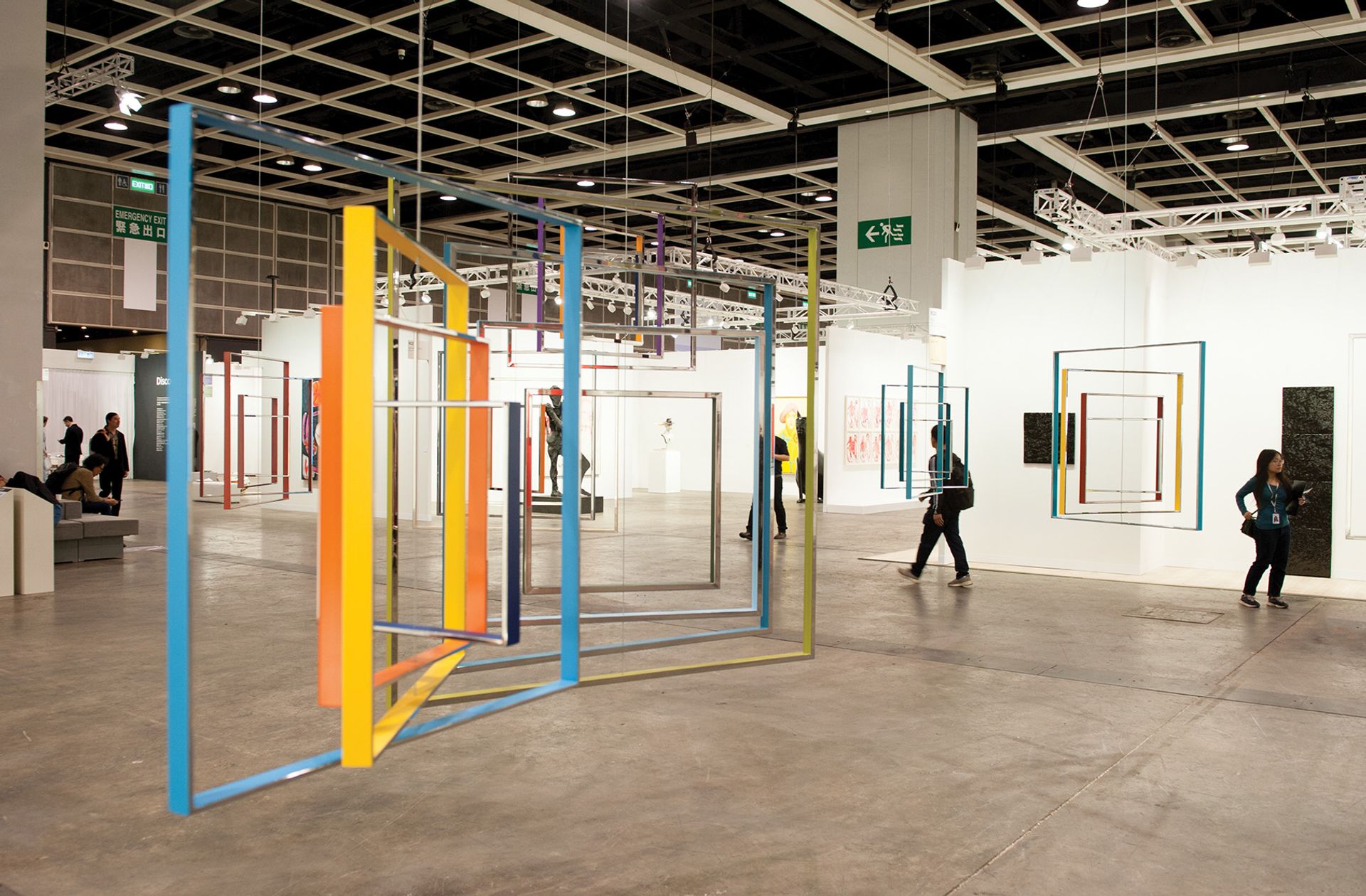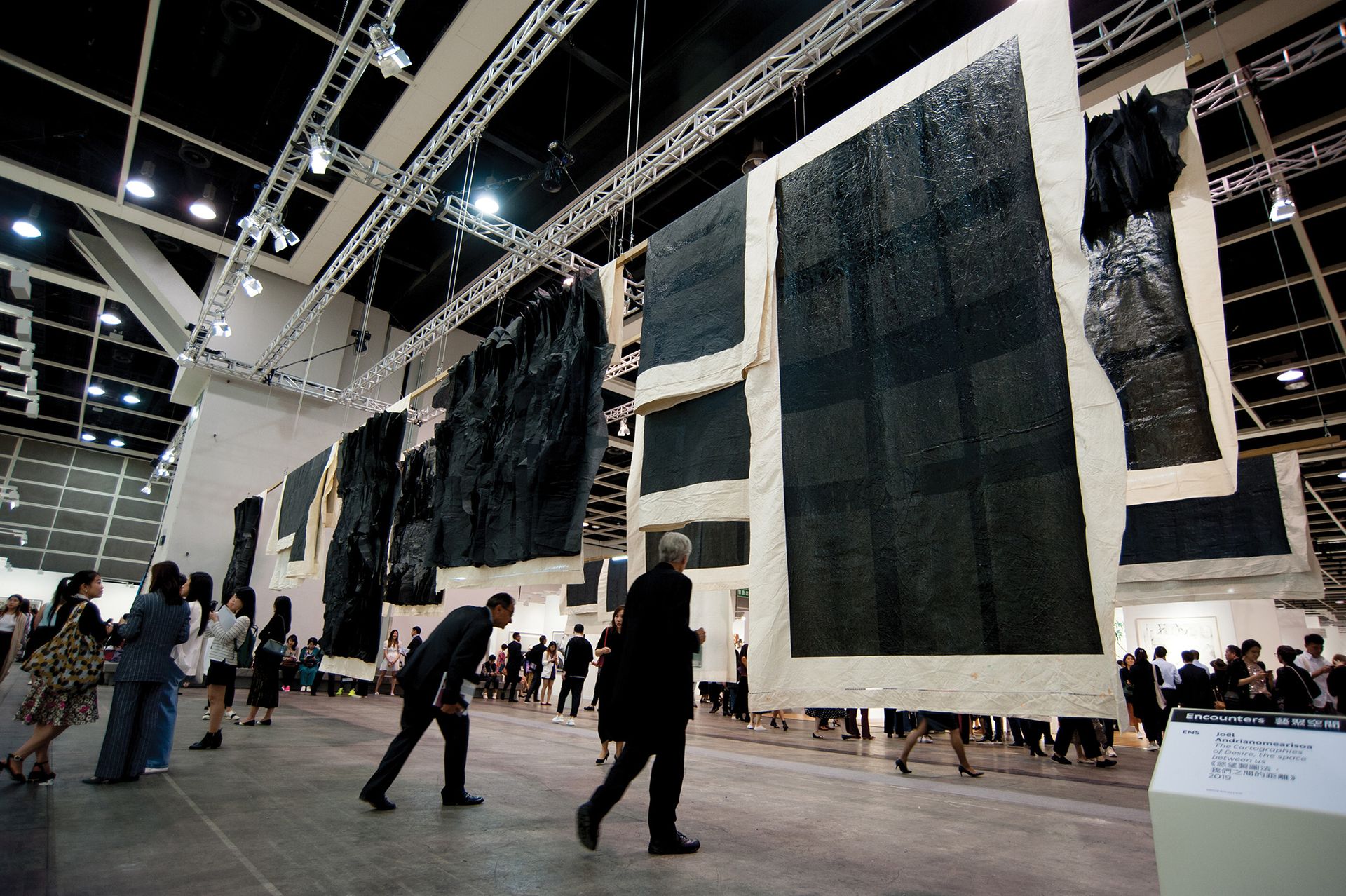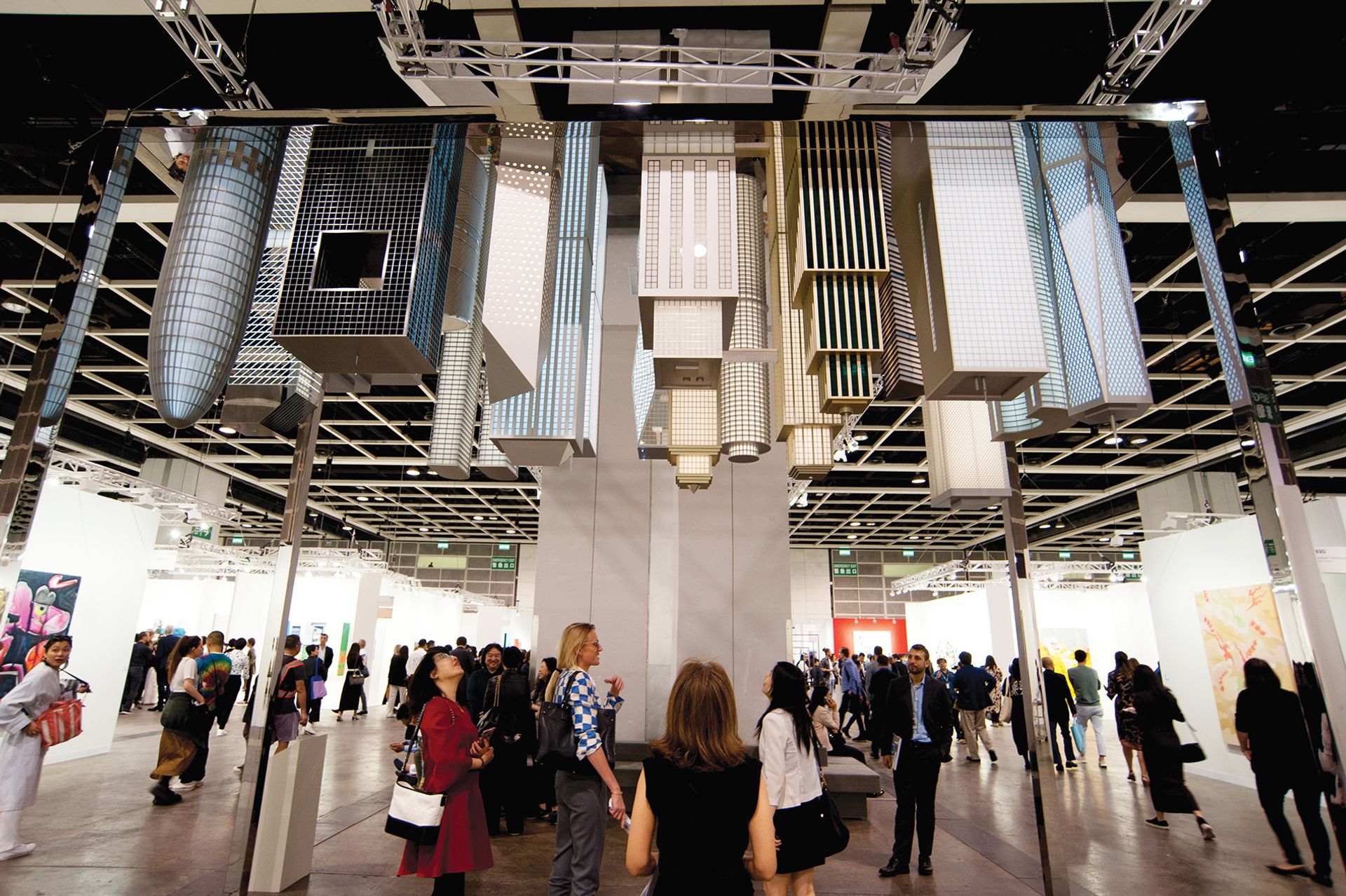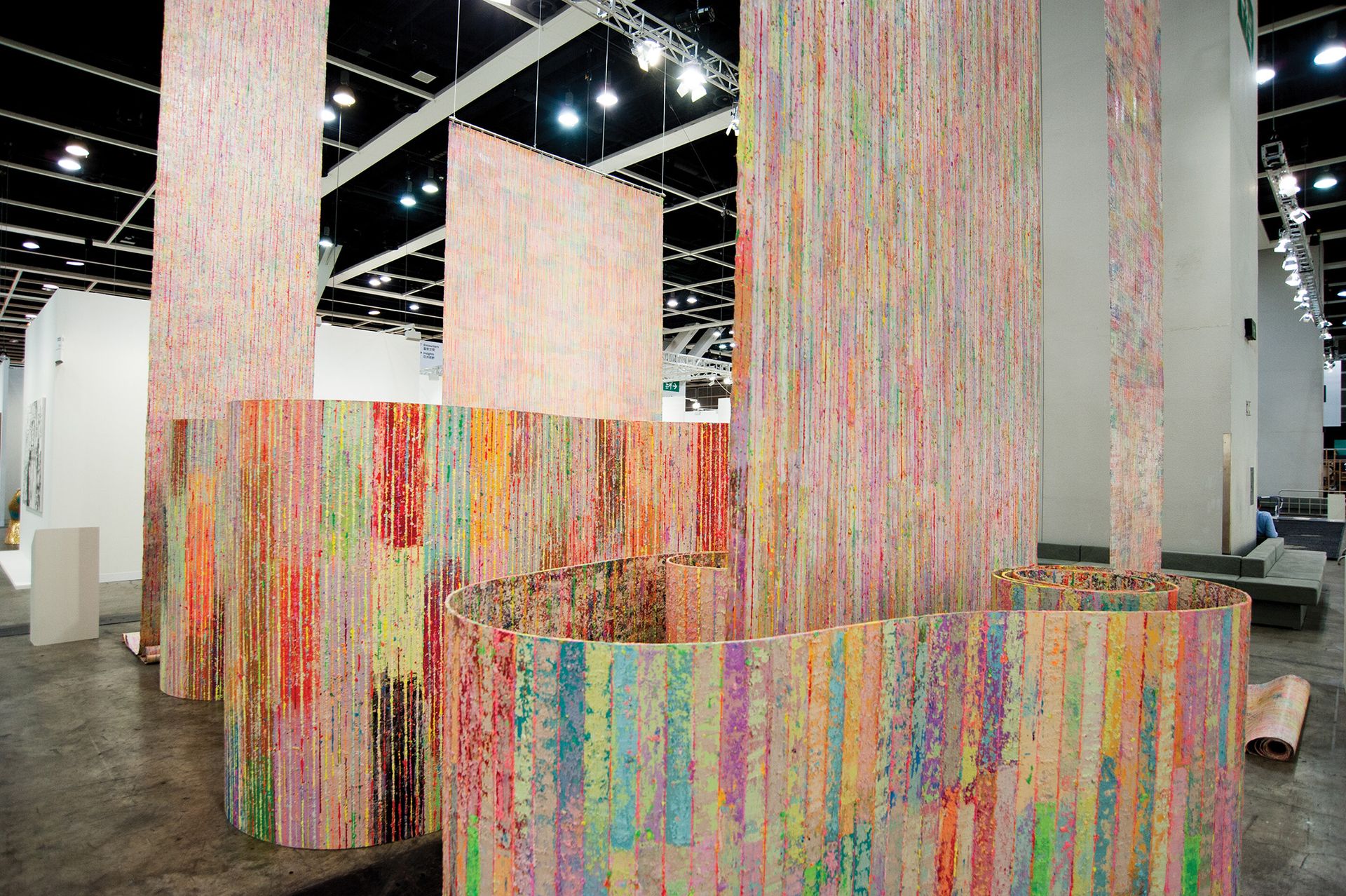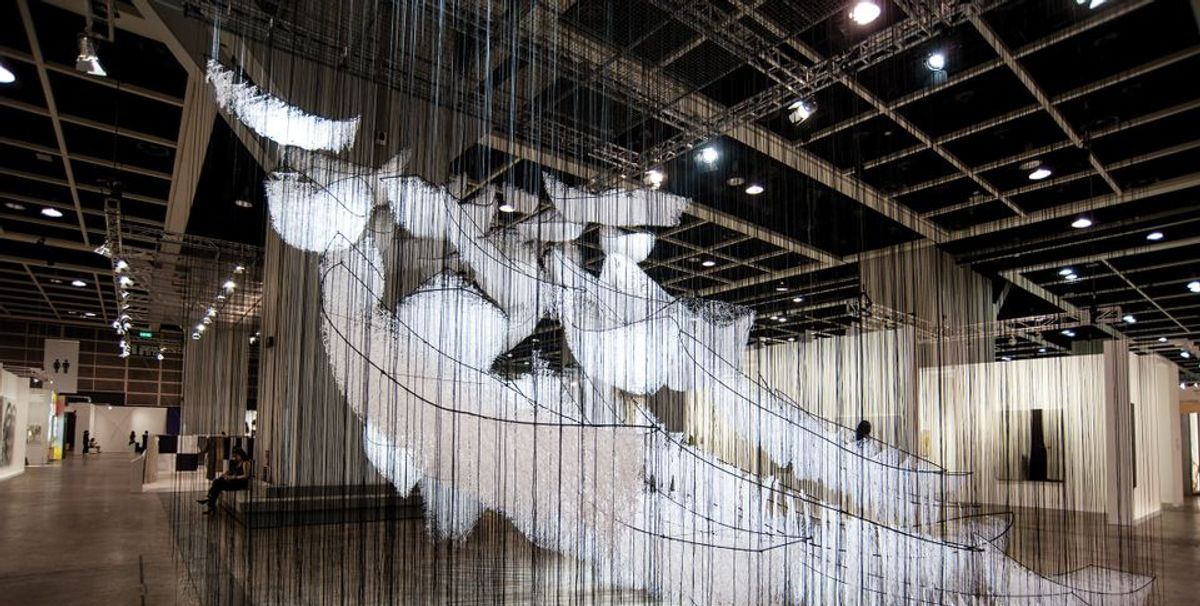Diversity is important to Alexie Glass-Kantor, the director of Artspace Sydney and the curator of the Encounters sector for large-scale works at Art Basel in Hong Kong. She says she feels a responsibility “to make sure that not just the centres, but also the peripheries, are represented”. Her selection of 12 works from galleries’ proposals this year includes four female artists and several names that may not—yet—be familiar to the international art world. “I want to advocate for them to be acquired by major museums and private collections,” she says.
This desire to resist the status quo is reflected in the title of Glass-Kantor’s fifth iteration of Encounters, called Still We Rise. The phrase speaks to a “duplicity” she observed in many of the artists’ projects, she says, by which beautiful appearances bely “much more layered social, cultural or political ideas”.
Arrayed along four “meridians” on the fair’s two floors, the Encounters works must have immediate visual impact to capture the attention of Art Basel’s estimated 70,000 visitors. But beyond the selfie-friendly colours and mirrored surfaces, “there is a necessity for something more”, Glass-Kantor says. Here, she reveals the stories behind six of this year’s works.


